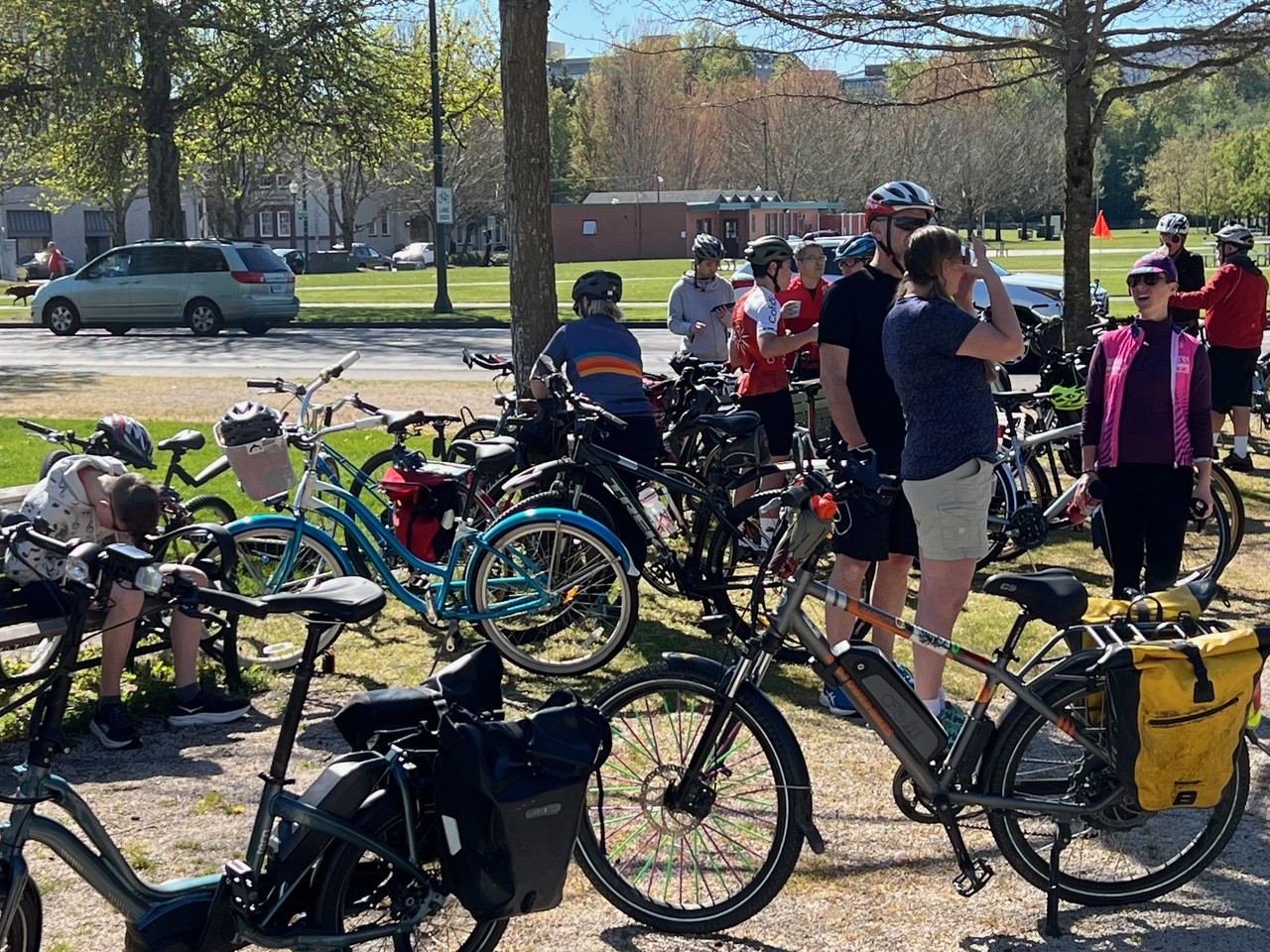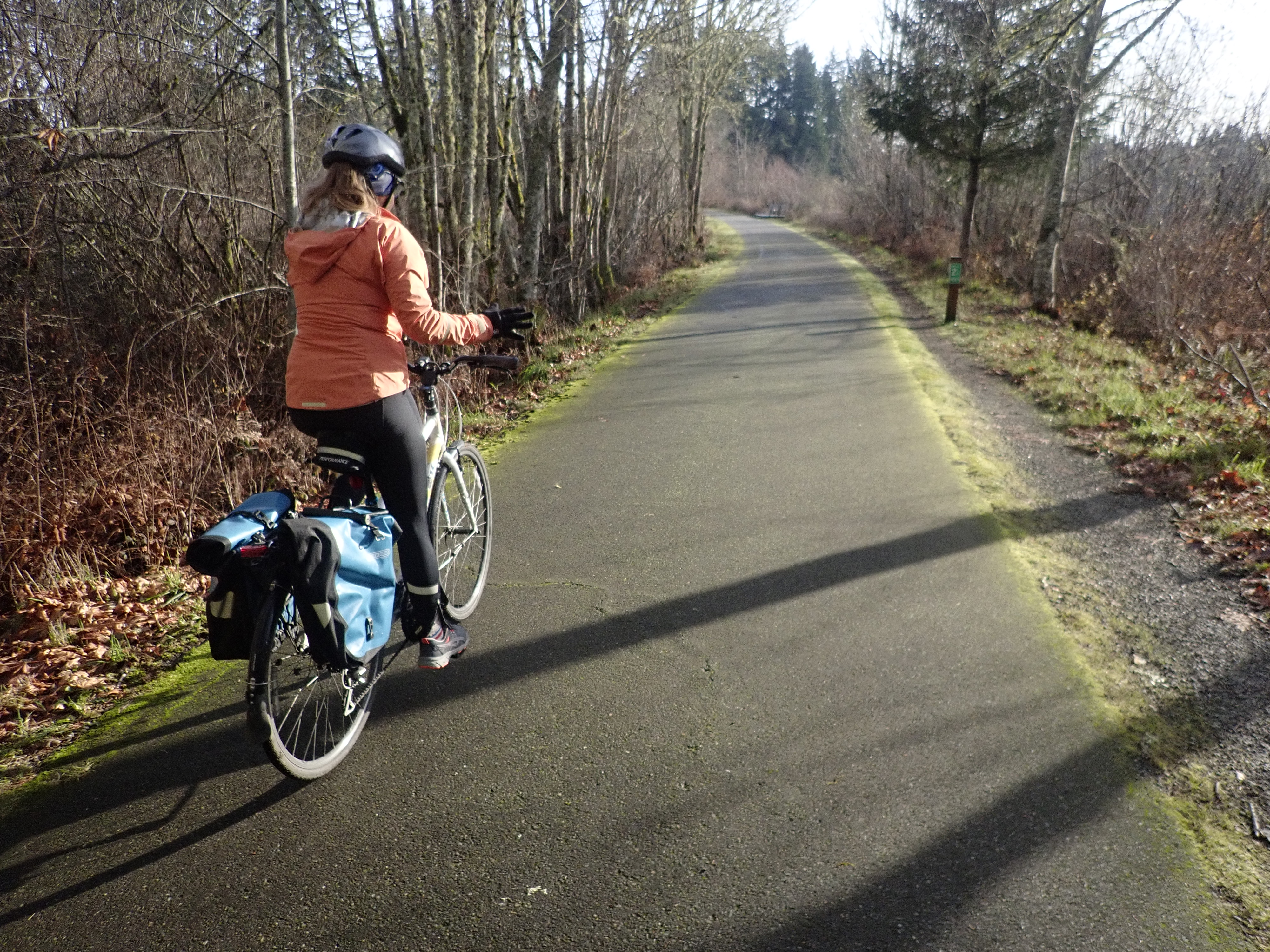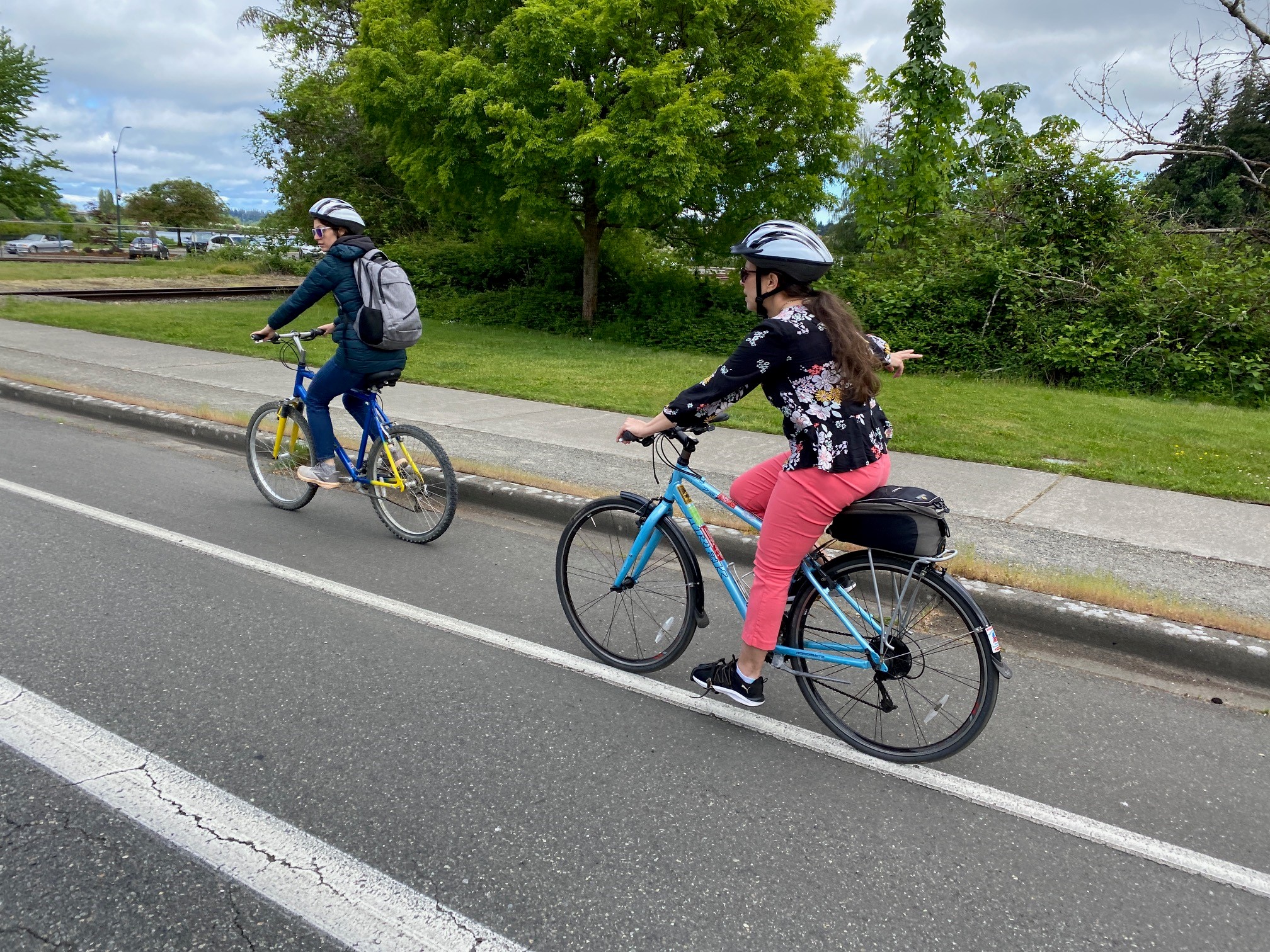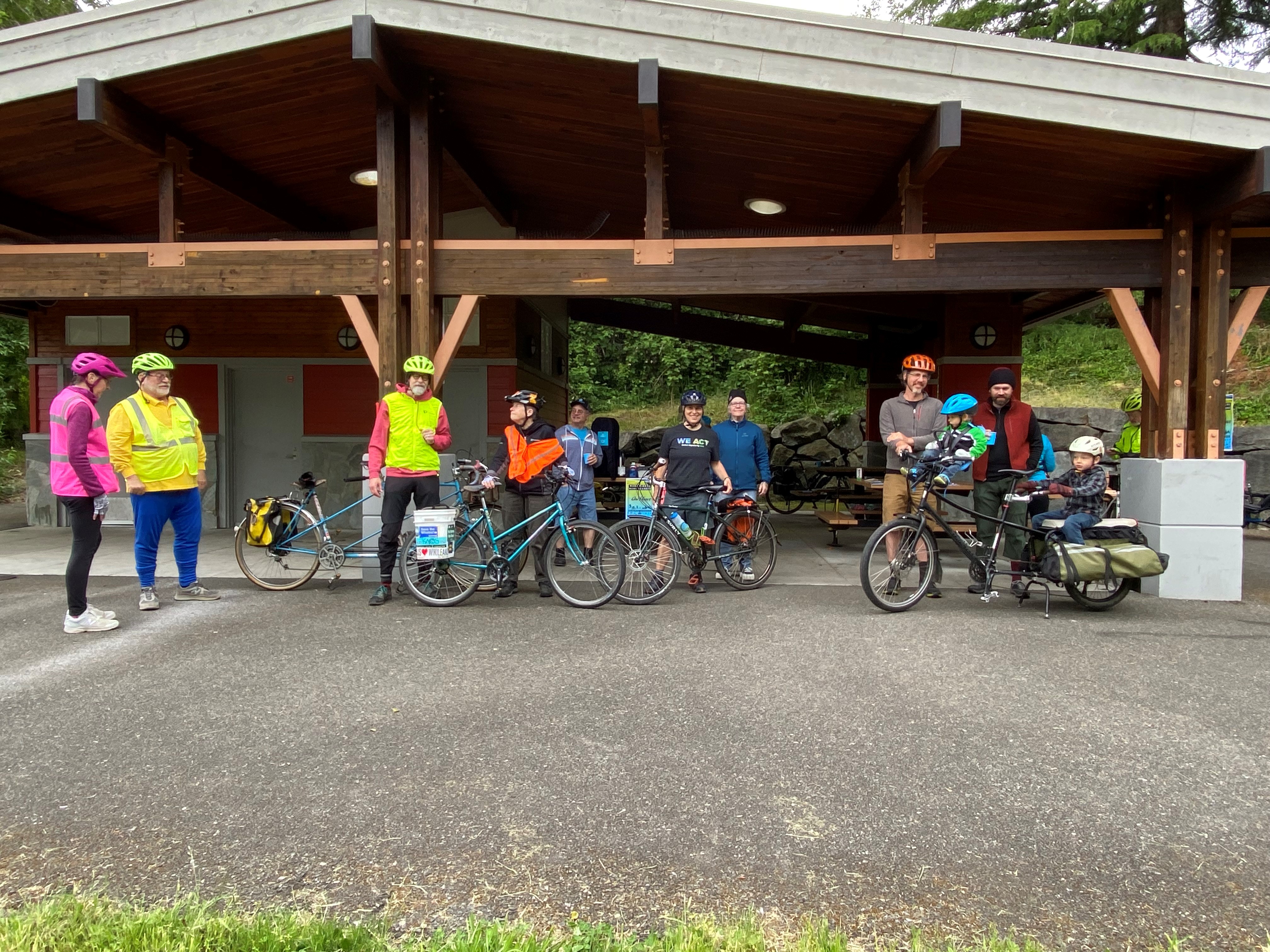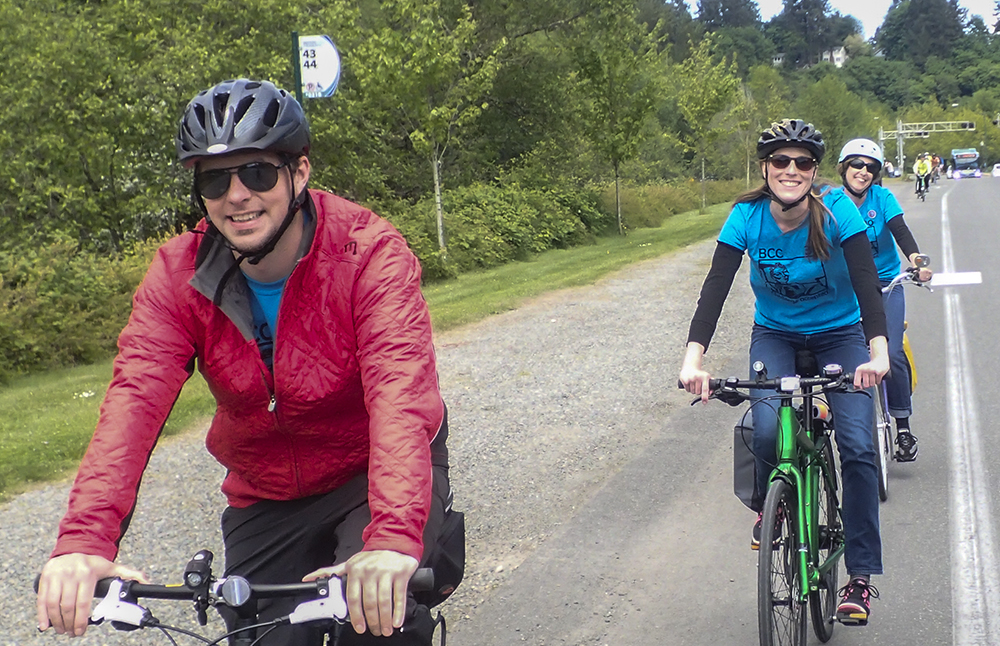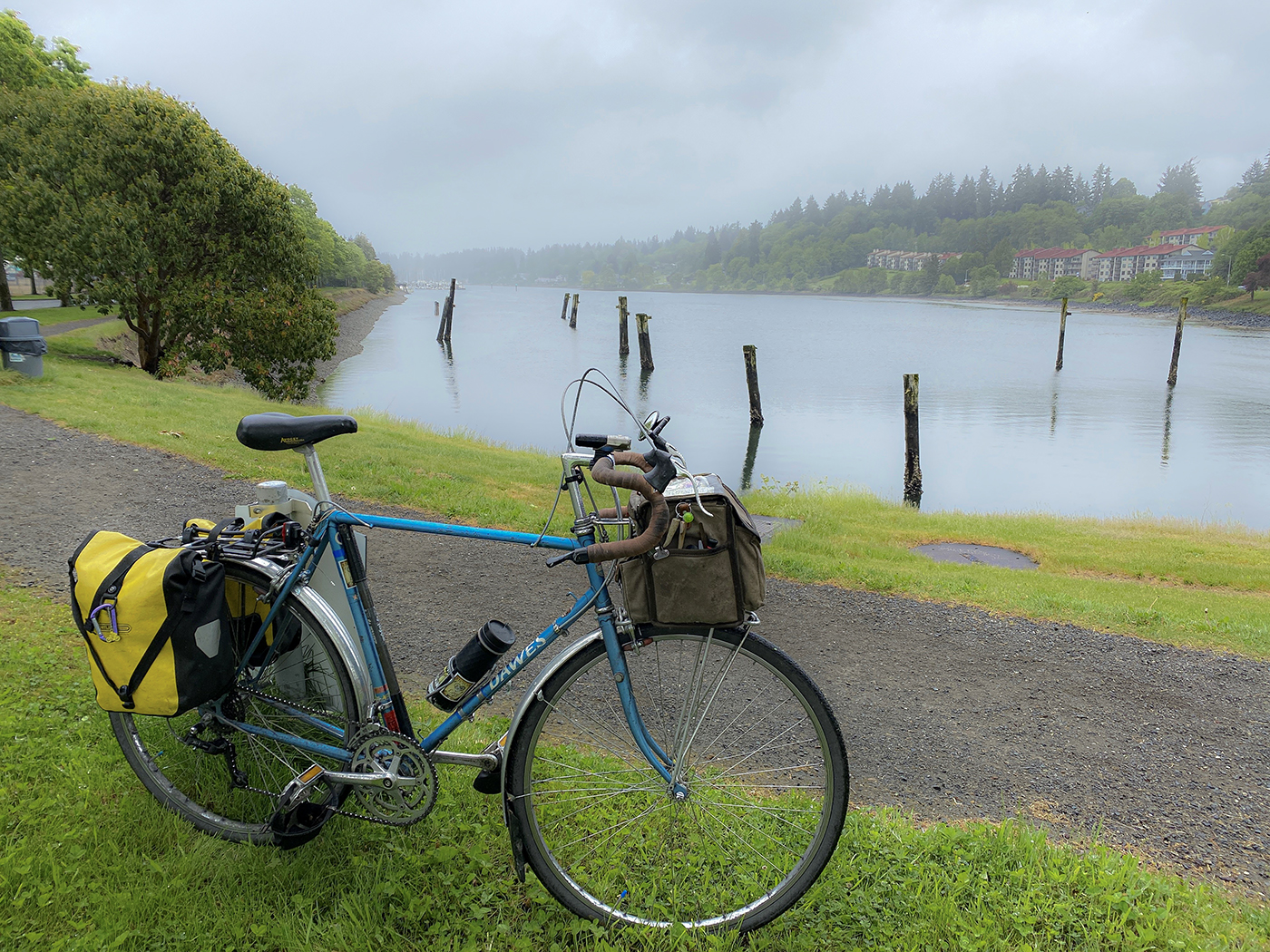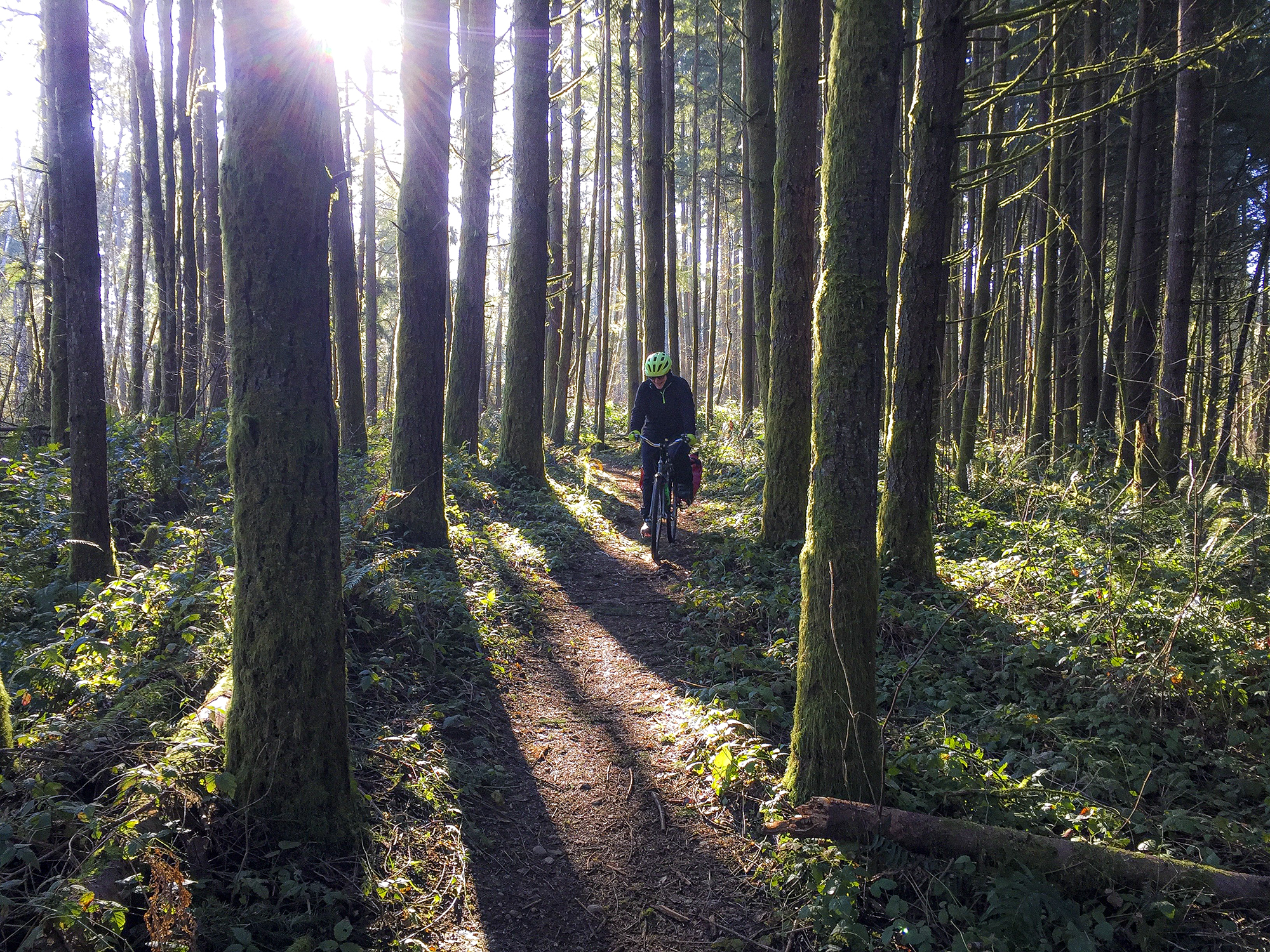Winter Bicycling Tips
Submitted by Duncan Green
Tips for a successful winter bicycling experience:
- Know your limits and take care of yourself. If it looks too slippery or it's raining buckets and pitch dark, don't be too hard on yourself. Choose wisely which days to ride, based on the conditions and your skill level.
- Outfit yourself and your bike properly for inclement weather riding (see Gear Up tips below).
- Ride defensively, and obey all traffic signs, signals and laws.
- Have an alternative plan (like the bus, or someone who could pick you up) to get home if icy or snowy conditions develop.
- Every Intercity Transit fixed route bus has a rack for 2 bikes. Bikes and humans ride free.
- Go slower when turning and allow for greater stopping distances when the road is wet.
- Watch for oily spots in wet weather, and black ice in freezing weather.
- Remember visibility is often low. Ride defensively, dress brightly and use lights, day or night.
- Register your bike in your town and with Bike Index, & always lock it.
- Do a quick check of your bike each time before riding. Tires have air? Brakes functioning? Inside of fenders free of debris? Wheels securely tightened to the bike (quick release or axle nut)?
- Remember, your attitude makes a big difference. Expect some discomfort and discouragement, and pedal through it. Riding in the cold or rain can actually be enjoyable with a positive outlook, and the benefits can outweigh the discomfort.
Gear Up for Comfort and Safety
Some helpful gear to make your winter biking safer, and more pleasant and sustainable:
- Waterproof-breathable jacket and pants are nice, if pricey. A rain poncho or basic rain gear can work too, especially if your trips are short.
- Properly installed lights, and reflective gear (safety vest or hi-vis rain jacket, etc.). A steady white-beam headlight and red rear reflector are required by state law. A red blinky rear light is recommended.
- Fenders and rack or basket to carry stuff (a milk crate zip-tied to your rack works great!).
- Waterproof panniers or messenger bag are nice, a plasic bag inside or over your current bag works too.
- Clear or yellow tinted eye-protection glasses (and a helmet of course).
- A warm cap that fits under your helmet, and warm gloves for cold days. (Pro tip: plastic bags over your socks (inside shoes) act as a vapor barrier and keep feet warm in very cold weather. A heavy plastic bag OVER your shoes can keep them drier in a downpour)
- A sturdy "U-lock" and a short cable to secure your bike and wheels.
Winter is a great time to get your bike checked over at your local bike shop- they're not so busy in winter, and will welcome you warmly! Gearing up can be an initial expense, but in the long run, biking is much less expensive than driving. Local bike shops offer personal attention when you are getting started – and they support the BCC.
Explore more about bike commuting:
WSDOT bike pages: wsdot.wa.gov/bike/commuting
Thurston Here to There and the Thurston County Bike Map.




